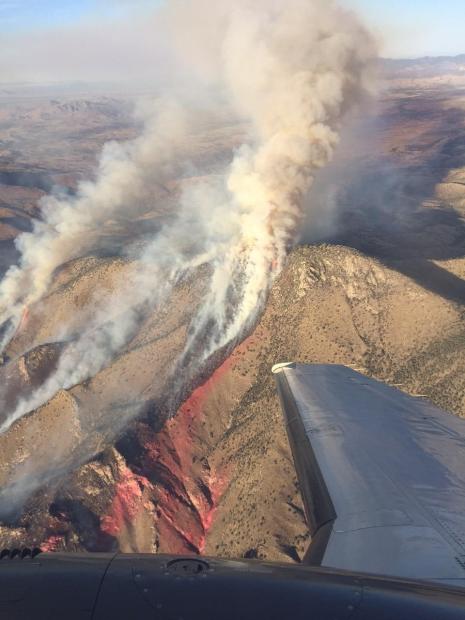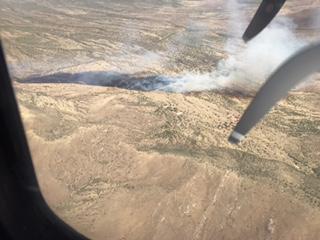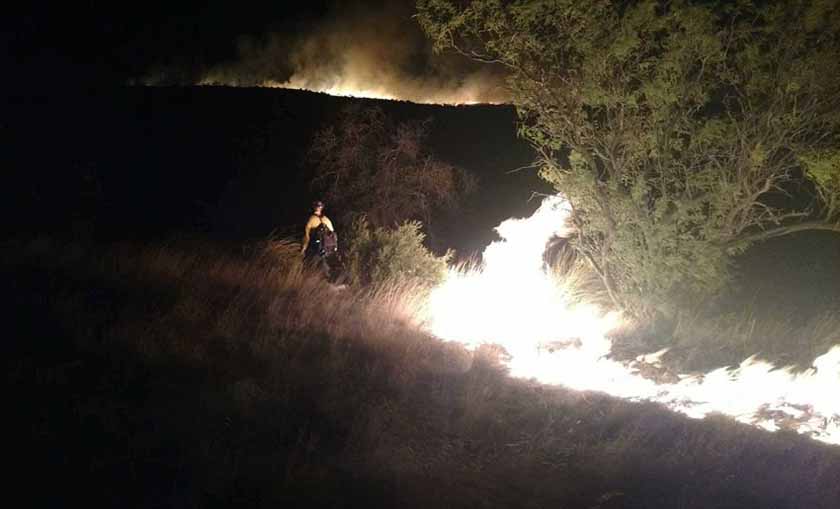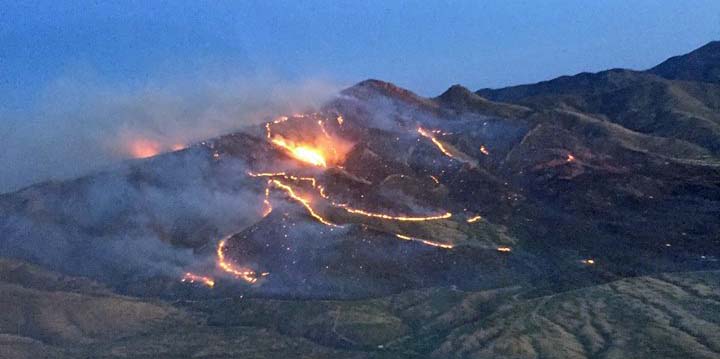Above: A satellite photographed the darkened outline of the Sawmill Fire east of Green Valley, Arizona on April 26, 2017. The red dots represent heat.
(UPDATED at 9:10 a.m. MDT April 27, 2017)
The growth of the Sawmill Fire east of Green Valley, Arizona slowed Wednesday as decreasing winds allowed air tankers and helicopters to drop water and retardant to assist the firefighters on the ground. The only significant spread that we found on satellite images was an additional 400 acres on the northeast corner of the fire.
As of Wednesday night fire managers were still calling it 40,356 acres.
An evacuation order remains in place for Rain Valley. Since evacuation orders were lifted for Greaterville and Singing Valley, residents of those areas are being allowed through the Arizona Highway 83 closure to access their homes. Arizona Highway 83 remains closed to public traffic.
The area is under a Red Flag Warning on Thursday and Friday for relative humidities in the teens and strong winds. One of the priorities on Thursday is to use aircraft to help secure the firelines before the winds increase.
Today, April 27, a Type 1 Incident Management Team will assume command of the 606 personnel on the Sawmill Fire.
****
(UPDATED at 7:47 p.m. MDT April 26, 2017)
At about 2 p.m. MDT the Incident Management Team said the Sawmill Fire had grown to 40,350 acres. At that time there were seven helicopters and three fixed wing aircraft assisting the firefighters on the ground.
On Wednesday morning the incident management team called it 20,000 acres.
At 2:03 p.m. MDT on Wednesday a heat detecting satellite mapped growth of the fire on the south and northeast sides.

The weather station near the fire at Empire recorded on Wednesday a high temperature of 75, a minimum relative humidity of 12 percent, and wind in the afternoon out of the northwest at 8-12 mph gusting at 20-24.

****
(UPDATED at 11:16 a.m. MDT April 26, 2017)
A fire that started Sunday morning, April 23 eight miles east of Green Valley, Arizona, has burned (we estimate) about 28,000 acres as of 2:38 a.m. MDT on Wednesday, April 26, 2017, and required evacuations for the communities of Greaterville, Singing Valley, and Rain Valley. It has spread to the east 21 miles, has a perimeter of approximately 63 miles, and crossed Arizona Highway 83 in multiple places.

The fire is burning on lands protected by the Coronado National Forest, Bureau of Land Management and the Arizona Department of Forestry and Fire Management.

On Tuesday the temperature in the fire area was in the low 70’s, the relative humidity was in the 30’s, and the wind was 12-18 gusting at 25-33 mph out of the west. The forecast for the fire area on Wednesday calls for conditions that could lead to significant additional fire spread toward the east and southeast, with temperatures in the mid-70’s, humidity dipping into the single digits, and winds out of the northwest at 10-20 mph gusting to 29.
Tuesday evening Jeff Andrews’ Type 2 Incident Management Team assumed command. Due to the increasing complexity, management will transition to a Type 1 Team on Thursday, April 27.

A full suppression strategy is being employed to protect nearby values at risk including homes, ranches and outbuildings, communications facilities, power lines, and the Arizona National Scenic Trail.







